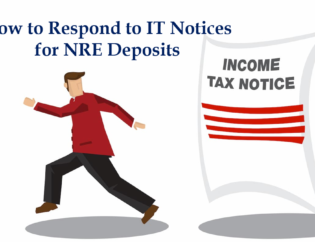Recent Steps by RBI to curb rupee depreciation (reduce gold import and tight liquidity in banking system) has led the short term rates and bond yields hit record high, giving a unique opportunity for investors to invest in debt at this level.
The yield on 10 year G-sec increased from 7.10% on May 24 to 8.44% on July 24 without RBI changing the repo rate (i.e. interest rate). It had taken more than a year for yield on 10 year G-Sec to decrease from 8.5% on May 31, 2012 to 7.1% and that too as a result of RBI reducing repo rate from 8% to 7.25% over the same period. The short term yields have increased significantly with 3 month Commercial Paper yielding 10.91%. The yields on corporate bonds have also increased by about 1.5-3% in last 2 months.
This offers a unique opportunity for investors to earn after tax return of 10%+ with very low risk.
Let’s analyze the effect, what to expect and how to invest:
1. What are the steps taken by RBI?
While RBI took number of steps in last two months, the steps taken on July 15 and July 22 were the key resulting in shooting up of the G-Sec yield from 7.56% on July 15 to 8.44% on July 23. RBI, using the Liquidity Adjustment Facility and Minimum Cash Reserve Maintenance Requirement, has limited the bank’s ability to borrow cheap without increasing the repo rate. However, these steps are temporary until further notification.
2. Is this over or more to come? Will RBI change repo rates?
No one knows. RBI will review the effects of these steps on the currency, current account deficit and economy and will determine the next steps. It cannot be said for sure that worst is over.
The interest rate follows a cycle and has either been upward sloping or downward sloping or stayed the same with each cycle lasting for about 2-3 years but never crisscross. We are currently in a decreasing interest rate environment and the repo rate has not bottomed yet. Any increase in repo rate indicates the policy change and if that happens, it will be very negative, which I believe RBI does not want to convey in this volatile market. So I am of the view that RBI will not increase the Repo rate.
3. If you have money now, whether to invest in Equity or Debt?
The current account deficit, high dependency on imported oil, stabilizing US economy, FII withdrawing from emerging markets, etc. will keep pressure on the depreciating rupee and the economy. The increasing cost of funds or yields will also negatively affect the growth rate. All in all, I do not expect the Indian Equity or the stock market to perform exceptionally in near future. I think the equity market will be range bound and highly volatile until the General Assembly (Lok Sabha) elections in 2014.
In contract, with the high yields on G-Sec, T-bills, corporate bonds or commercial papers, DEBT has become very attractive. I would think that it would be prudent for investors to generate 10%+ return without much risk by investing in Debt and if someone is willing to take risk, return could be even higher assuming decreasing yields in future.
4. Which category of Debt mutual fund to be selected?
If you do not want to take much risk, the best category to invest is the short term mutual funds. If you want to take a little risk, medium term funds with 1-3 year maturity are recommended. If you are a long term investor and want to take more risk, Income or G-Sec funds have become attractive.
Also, it will be less risky to invest in funds that invest more in AAA rated corporate bonds than G-Sec as I think while the government borrowing cost could increase to finance the increasing current account deficit in short term but business borrowing cost could go down as corporate may reduce borrowing in the wake of increasing cost of borrowing and decreasing growth rate of Indian economy.
5. How much return to be expected and What is the guarantee of the return?
Short term funds having yield of 10-11% and maturity of less than 1 year will less likely to give negative return provided you hold the fund for about a year and expect to get 10% return.
The medium Term funds will have 10%+ yield and if the yield decreases, the return could be higher due to capital appreciation on yield decreasing over the period and expect to get 10-12%+ return.The Income and G-Sec funds provide higher risk higher return and can expect to generate 12-15%+ return. Sounds too optimistic?
The period, during which G-Sec yield reduced from 8.40% to 7.10%, Income and G-Sec funds have actually returned 15-18%+ return over a 1 year period. While you could expect the same thing for next 1-1.5 years, the road will bumpy and painful as there is a risk that yield could go up in short term.
While there is no guarantee, there is little for everyone. Person who does not want to take risk can easily earn 9-10%+ tax free, way better than bank FD that gives taxable 9% return. If you are willing to take risk, your return could increase a lot but there is a risk.
Bottomline:
If you have funds that you want to invest to generate better after tax risk adjusted return, DEBT is the answer. Please DO NOT wait as the window of opportunity is very small and RBI could roll back the changes as quickly as it introduced them.
Also, Rupee at or close to all time low offer another incentive for NRIs to transfer funds at higher rate and increase their return.
Please note the views are personal and let us know if you have any question.
The yield on 10 year G-sec increased from 7.10% on May 24 to 8.44% on July 24 without RBI changing the repo rate (i.e. interest rate). It had taken more than a year for yield on 10 year G-Sec to decrease from 8.5% on May 31, 2012 to 7.1% and that too as a result of RBI reducing repo rate from 8% to 7.25% over the same period. The short term yields have increased significantly with 3 month Commercial Paper yielding 10.91%. The yields on corporate bonds have also increased by about 1.5-3% in last 2 months.
This offers a unique opportunity for investors to earn after tax return of 10%+ with very low risk.
Let’s analyze the effect, what to expect and how to invest:
1. What are the steps taken by RBI?
While RBI took number of steps in last two months, the steps taken on July 15 and July 22 were the key resulting in shooting up of the G-Sec yield from 7.56% on July 15 to 8.44% on July 23. RBI, using the Liquidity Adjustment Facility and Minimum Cash Reserve Maintenance Requirement, has limited the bank’s ability to borrow cheap without increasing the repo rate. However, these steps are temporary until further notification.
2. Is this over or more to come? Will RBI change repo rates?
No one knows. RBI will review the effects of these steps on the currency, current account deficit and economy and will determine the next steps. It cannot be said for sure that worst is over.
The interest rate follows a cycle and has either been upward sloping or downward sloping or stayed the same with each cycle lasting for about 2-3 years but never crisscross. We are currently in a decreasing interest rate environment and the repo rate has not bottomed yet. Any increase in repo rate indicates the policy change and if that happens, it will be very negative, which I believe RBI does not want to convey in this volatile market. So I am of the view that RBI will not increase the Repo rate.
3. If you have money now, whether to invest in Equity or Debt?
The current account deficit, high dependency on imported oil, stabilizing US economy, FII withdrawing from emerging markets, etc. will keep pressure on the depreciating rupee and the economy. The increasing cost of funds or yields will also negatively affect the growth rate. All in all, I do not expect the Indian Equity or the stock market to perform exceptionally in near future. I think the equity market will be range bound and highly volatile until the General Assembly (Lok Sabha) elections in 2014.
In contract, with the high yields on G-Sec, T-bills, corporate bonds or commercial papers, DEBT has become very attractive. I would think that it would be prudent for investors to generate 10%+ return without much risk by investing in Debt and if someone is willing to take risk, return could be even higher assuming decreasing yields in future.
4. Which category of Debt mutual fund to be selected?
If you do not want to take much risk, the best category to invest is the short term mutual funds. If you want to take a little risk, medium term funds with 1-3 year maturity are recommended. If you are a long term investor and want to take more risk, Income or G-Sec funds have become attractive.
Also, it will be less risky to invest in funds that invest more in AAA rated corporate bonds than G-Sec as I think while the government borrowing cost could increase to finance the increasing current account deficit in short term but business borrowing cost could go down as corporate may reduce borrowing in the wake of increasing cost of borrowing and decreasing growth rate of Indian economy.
5. How much return to be expected and What is the guarantee of the return?
Short term funds having yield of 10-11% and maturity of less than 1 year will less likely to give negative return provided you hold the fund for about a year and expect to get 10% return.
The medium Term funds will have 10%+ yield and if the yield decreases, the return could be higher due to capital appreciation on yield decreasing over the period and expect to get 10-12%+ return.The Income and G-Sec funds provide higher risk higher return and can expect to generate 12-15%+ return. Sounds too optimistic?
The period, during which G-Sec yield reduced from 8.40% to 7.10%, Income and G-Sec funds have actually returned 15-18%+ return over a 1 year period. While you could expect the same thing for next 1-1.5 years, the road will bumpy and painful as there is a risk that yield could go up in short term.
While there is no guarantee, there is little for everyone. Person who does not want to take risk can easily earn 9-10%+ tax free, way better than bank FD that gives taxable 9% return. If you are willing to take risk, your return could increase a lot but there is a risk.
Bottomline:
If you have funds that you want to invest to generate better after tax risk adjusted return, DEBT is the answer. Please DO NOT wait as the window of opportunity is very small and RBI could roll back the changes as quickly as it introduced them.
Also, Rupee at or close to all time low offer another incentive for NRIs to transfer funds at higher rate and increase their return.
Please note the views are personal and let us know if you have any question.








